Can Renewable Energy Replace Fossil Fuels?
The question of whether renewable energy can replace fossil fuels is one that resonates deeply in today’s world. With the alarming pace of climate change and the finite nature of fossil fuels, the urgency for a transition to sustainable energy sources has never been clearer. But can we genuinely rely on renewables to meet our energy needs? The answer is both complex and promising. While fossil fuels have powered our world for over a century, the emergence of renewable energy sources like solar, wind, hydro, and geothermal presents a viable alternative that could not only sustain our energy requirements but also pave the way for a healthier planet.
As we delve deeper into this topic, it’s essential to understand the current energy landscape. Globally, fossil fuels still dominate the energy mix, accounting for approximately 80% of the total energy consumption. However, the rise of renewable energy, which now makes up around 20% of global energy, signals a shift in how we think about energy production. This transition is not just a trend; it’s a necessity driven by environmental, economic, and social factors.
Let’s take a closer look at the types of renewable energy available and their unique advantages. Each source plays a critical role in reducing our dependence on fossil fuels:
- Solar Energy: Harnessing the power of the sun, solar energy has become increasingly efficient thanks to innovations in technology.
- Wind Energy: Wind turbines, both onshore and offshore, are generating significant amounts of energy while minimizing carbon footprints.
- Hydro Energy: Utilizing the flow of water to produce electricity, hydro energy is a reliable and established renewable source.
- Geothermal Energy: Tapping into the Earth’s internal heat, geothermal energy provides a consistent and sustainable energy source.
The potential of these renewable sources is immense, but they are not without their challenges. For instance, while solar energy has seen remarkable advancements, such as the development of photovoltaic cells and solar thermal systems, there are still hurdles to overcome. Issues like energy storage, space requirements, and grid integration need to be addressed to fully capitalize on solar energy's potential.
One of the most exciting developments in the solar sector is the decreasing cost of installations. According to recent data, the cost of solar panels has dropped by over 80% in the last decade, making it a competitive option for both residential and commercial users. Moreover, government incentives and rebates are further sweetening the deal, encouraging more people to make the switch to solar energy.
However, the journey to widespread solar adoption is not without its bumps. Space requirements can be a significant barrier, especially in urban areas where real estate is at a premium. Additionally, effective energy storage solutions are crucial for ensuring that we can harness solar energy even when the sun isn’t shining. Grid integration is another technical challenge that requires innovative solutions to ensure that solar energy can be efficiently distributed and used.
Wind energy is another key player in the renewable energy arena. The growth of wind farms, both onshore and offshore, has been impressive. These farms not only generate clean energy but also contribute to local economies through job creation and investment. Wind energy has the potential to provide a substantial portion of our energy needs while significantly reducing fossil fuel consumption.
As we compare the environmental impacts of fossil fuels versus renewables, the differences are stark. Fossil fuels are notorious for their high carbon emissions, habitat disruption, and resource depletion. In contrast, renewable energy sources offer a path to a cleaner, more sustainable future. For instance, the shift to renewable energy could lead to a substantial reduction in our carbon footprint, helping to mitigate the effects of climate change on a global scale.
Moreover, renewable energy resources are inherently more sustainable. Unlike fossil fuels, which are finite and contribute to environmental degradation, renewable sources can be harnessed indefinitely without depleting natural ecosystems. This sustainability is essential for ensuring a greener future for generations to come, allowing us to enjoy the benefits of energy without compromising the health of our planet.
- Can renewable energy completely replace fossil fuels? While it's a challenging goal, advancements in technology and growing investments in renewable sources make it a plausible future.
- What are the main barriers to renewable energy adoption? Key challenges include cost, infrastructure, and the need for energy storage solutions.
- How do renewable energy sources impact the environment? They significantly reduce carbon emissions and resource depletion compared to fossil fuels.
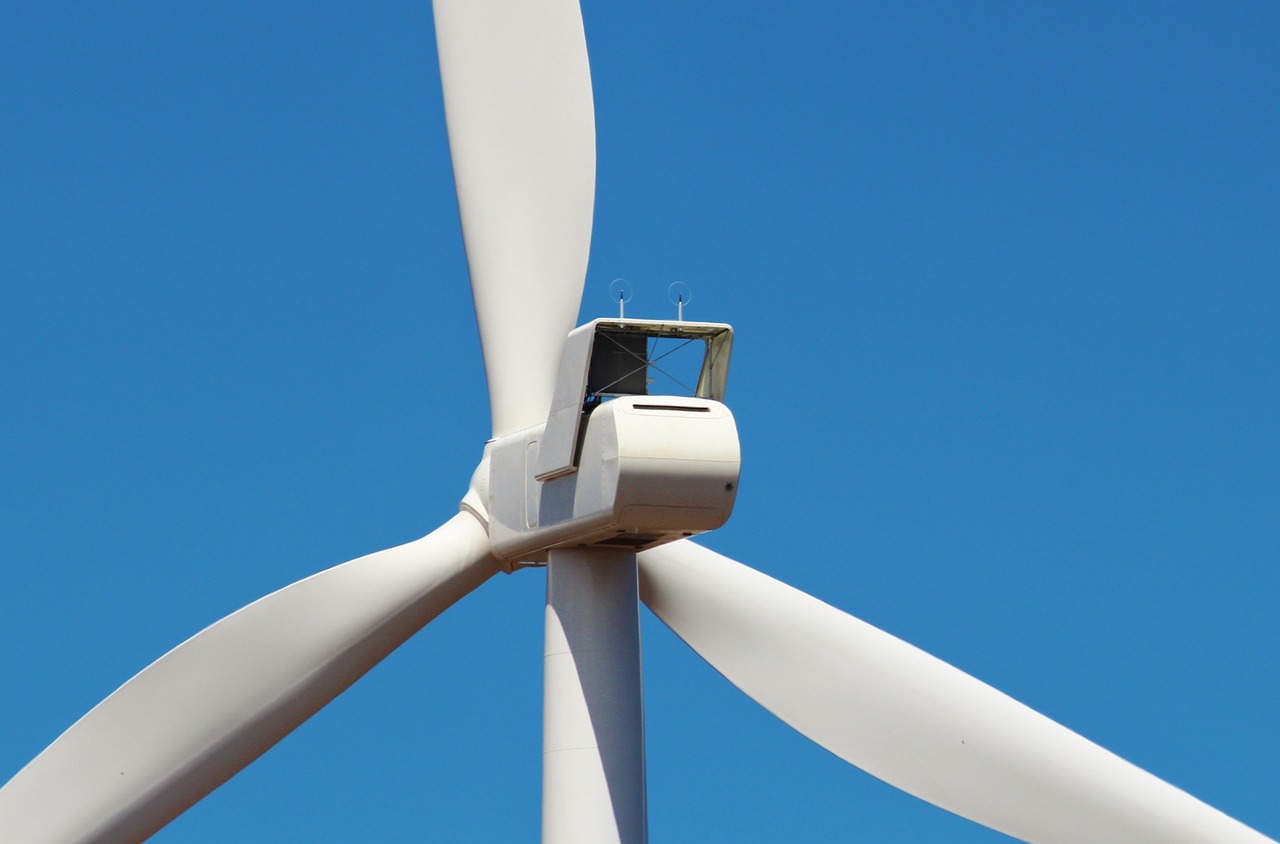
The Current Energy Landscape
The global energy landscape is a complex tapestry woven from various sources, but at its core, it remains heavily reliant on fossil fuels. As of now, fossil fuels—such as coal, oil, and natural gas—account for approximately 80% of the world's energy consumption. This overwhelming dependence poses significant challenges, especially in light of the urgent need to combat climate change and reduce greenhouse gas emissions. However, the emergence of renewable energy sources has sparked a revolution in how we think about energy production and consumption.
In recent years, we have witnessed a gradual shift in the energy mix, with renewable sources like solar, wind, hydro, and geothermal energy gaining traction. This shift has been driven by technological advancements, government policies, and a growing awareness of the environmental impacts of traditional energy sources. For instance, countries around the world are setting ambitious targets to reduce their carbon footprints and increase the share of renewables in their energy portfolios. According to the International Energy Agency (IEA), renewable energy sources are expected to account for nearly 30% of global energy demand by 2024, marking a significant milestone in the transition towards a more sustainable energy future.
But what does this transition really mean for our planet? To put it simply, moving away from fossil fuels and embracing renewable energy can lead to a cleaner, greener future. However, it's not just about swapping one energy source for another; it involves a comprehensive overhaul of our energy systems, infrastructure, and consumption patterns. Consider the following key factors:
- Technological Innovation: Advancements in technology are making renewable energy sources more efficient and cost-effective.
- Government Policies: Supportive policies and incentives can accelerate the adoption of renewable energy.
- Public Awareness: Increasing awareness about climate change is driving consumers and businesses to seek sustainable energy solutions.
While the transition to renewable energy is promising, it is not without its challenges. Issues such as energy storage, grid integration, and the need for substantial investments in infrastructure must be addressed to ensure a smooth transition. Furthermore, the reliance on fossil fuels is deeply embedded in many economies, making it difficult to shift gears overnight. Nevertheless, the momentum is building, and the potential for renewable energy to replace fossil fuels is becoming more tangible every day.
In conclusion, the current energy landscape is at a crossroads. With fossil fuels still dominating the scene, the rise of renewable energy sources presents a beacon of hope for a sustainable future. As we continue to explore and invest in these alternatives, we must remain vigilant about the challenges that lie ahead, ensuring that we pave the way for a cleaner, more sustainable world for generations to come.

Types of Renewable Energy
When we talk about renewable energy, we're diving into a world of possibilities that can reshape our future. Renewable energy sources are not just buzzwords; they represent a critical shift in how we generate power. The most common types include solar, wind, hydro, and geothermal energy, each with its own unique advantages and potential to reduce our reliance on fossil fuels.
First up is solar energy. This form harnesses the sun's power through technologies like photovoltaic cells and solar thermal systems. Imagine capturing sunlight and converting it into electricity that powers your home! It's like having a personal sun that works for you day in and day out. The best part? As technology advances, solar energy is becoming more efficient and accessible, allowing more households to tap into this clean energy source.
Next, we have wind energy. Picture those tall wind turbines spinning gracefully in the breeze. They are not just a beautiful sight; they are a testament to human ingenuity. Wind energy is harnessed both onshore and offshore, and it's rapidly becoming a major player in the renewable energy game. The growth of wind farms is impressive, and with each turbine, we move closer to a sustainable energy future.
Then there's hydro energy, which utilizes the power of flowing water. Think of it as nature's own energy generator. Dams and rivers can produce significant amounts of electricity, and this method has been used for decades. It’s a reliable source, but we must be cautious about its environmental impact, ensuring that we don't disrupt local ecosystems in the process.
Finally, we can't forget about geothermal energy. This type of energy taps into the Earth's internal heat. It’s like having a hot spring that can power your home! Geothermal energy is particularly effective in regions with volcanic activity, and it offers a consistent and reliable energy source that can operate regardless of weather conditions.
In summary, the diversity of renewable energy sources means that we have multiple avenues to explore in our quest to replace fossil fuels. Each type has its own set of benefits and challenges. As we continue to innovate and improve these technologies, the potential to create a cleaner, more sustainable world becomes increasingly achievable. The transition to renewable energy is not just a dream—it's a necessary step towards a healthier planet.
- What are the main types of renewable energy? The main types include solar, wind, hydro, and geothermal energy.
- How does solar energy work? Solar energy works by converting sunlight into electricity using photovoltaic cells or solar thermal systems.
- Is wind energy reliable? Yes, wind energy is a reliable source of energy, especially in areas with consistent wind patterns.
- What are the environmental impacts of hydro energy? While hydro energy is renewable, it can disrupt local ecosystems if not managed properly.
- Can geothermal energy be used anywhere? Geothermal energy is most effective in regions with volcanic activity or hot springs.

Solar Energy Innovations
When we think about the future of energy, are at the forefront of the conversation. Imagine harnessing the power of the sun to not only light up our homes but to also fuel our cars and power our industries. With advancements in technology, solar energy is becoming more efficient, affordable, and accessible than ever before. One of the most exciting developments in this field is the evolution of photovoltaic cells. These tiny units, which convert sunlight directly into electricity, have undergone significant improvements. For instance, new materials and designs are enabling them to capture a broader spectrum of sunlight, increasing their efficiency rates dramatically.
Another innovation making waves is solar thermal systems. Unlike photovoltaic cells, which generate electricity, these systems use sunlight to heat water or air for residential and commercial use. This technology is particularly beneficial in regions with high sunlight exposure, providing a reliable source of hot water and heating. The combination of these two technologies is creating a more robust solar energy landscape, allowing consumers to choose solutions that best fit their needs.
But it doesn't stop there. The integration of smart technology into solar energy systems is revolutionizing how we interact with energy. Smart inverters and energy management systems enable homeowners to monitor their energy production and consumption in real-time, optimizing usage and reducing waste. This level of control not only enhances efficiency but also empowers users to make informed decisions about their energy consumption. Additionally, as battery storage technology advances, the ability to store solar energy for use during non-sunny periods is becoming a reality, further enhancing the viability of solar power as a primary energy source.
However, while the innovations in solar technology are promising, there are still challenges that need addressing. For instance, the initial costs of solar installations can be a barrier for many households. But here’s the good news: with government incentives and decreasing installation costs, solar power is becoming increasingly attractive. According to recent studies, the cost of solar panels has dropped by over 80% in the last decade, making it a feasible option for many. Incentives such as tax credits and rebates are also helping to ease the financial burden, encouraging more people to make the switch to solar.
Even with these advancements, we must tackle the challenges that come with solar adoption. Space requirements for solar panels can be significant, especially in urban areas where rooftops may not be large enough to accommodate enough panels for substantial energy generation. Additionally, integrating solar energy into the existing grid poses its own set of challenges, as the grid must be adapted to handle the variable nature of solar power production. Addressing these issues will be crucial as we move towards a more sustainable energy future.
In conclusion, the innovations in solar energy are paving the way for a cleaner, more sustainable future. With ongoing advancements in technology, decreasing costs, and a growing commitment to renewable energy, solar power is not just a dream—it's becoming a reality. As we harness the sun’s energy more effectively, we can look forward to a world where our energy needs are met without compromising the health of our planet.
- What are photovoltaic cells? Photovoltaic cells are devices that convert sunlight directly into electricity, forming the backbone of solar energy systems.
- How do solar thermal systems work? Solar thermal systems use sunlight to heat water or air, providing hot water and heating for residential or commercial use.
- What are the benefits of using solar energy? Solar energy is renewable, reduces electricity bills, and decreases reliance on fossil fuels, contributing to a cleaner environment.
- Are there incentives for installing solar panels? Yes, many governments offer tax credits, rebates, and other incentives to encourage the adoption of solar energy.
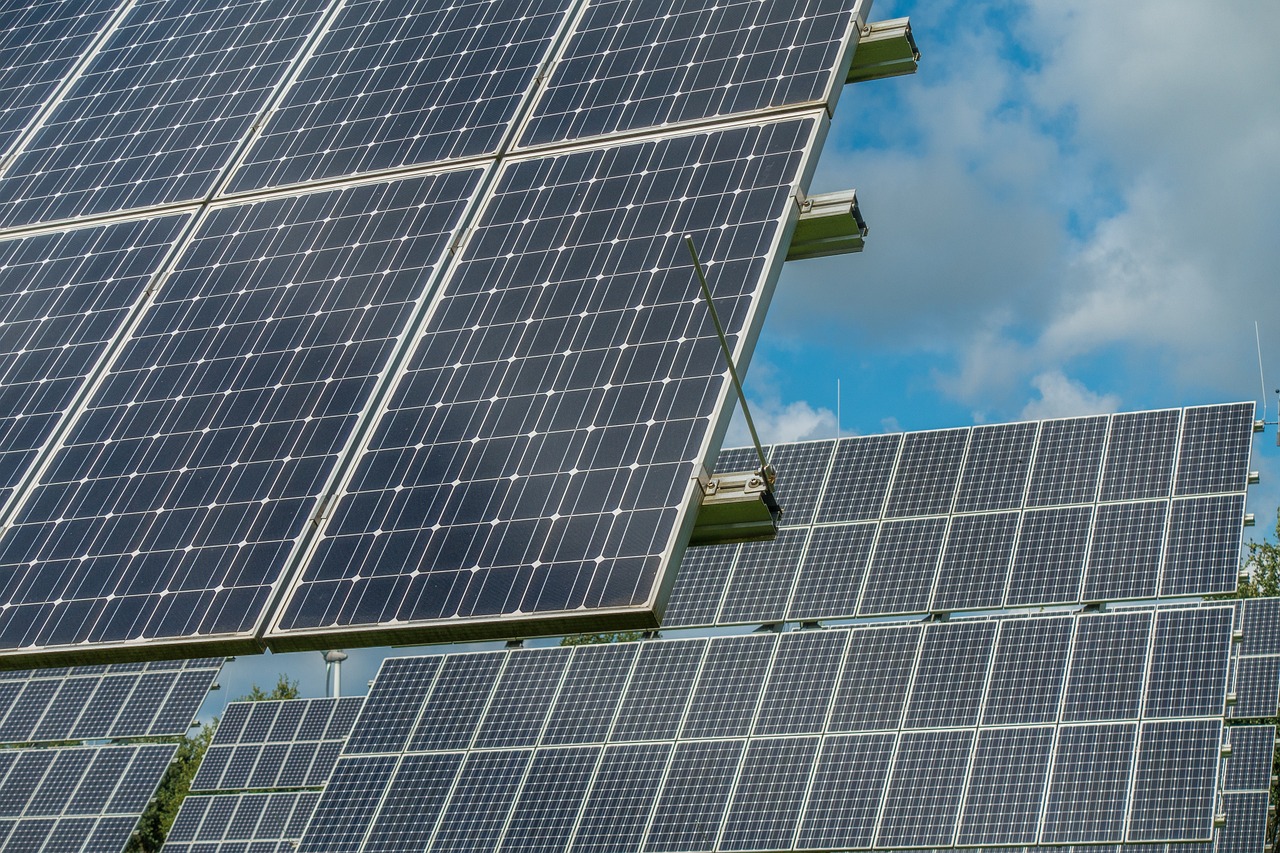
Cost-Effectiveness of Solar
The cost-effectiveness of solar energy has seen a remarkable transformation over the past decade, making it one of the most appealing options for energy generation today. Gone are the days when solar panels were considered a luxury; they have now become a practical and affordable solution for both homeowners and businesses. The decreasing costs of solar installations can be attributed to several factors, including advancements in technology, increased competition among manufacturers, and economies of scale in production. In fact, the price of solar photovoltaic (PV) systems has dropped by over 80% since 2010, making solar energy more accessible than ever.
Moreover, government incentives play a crucial role in enhancing the cost-effectiveness of solar energy. Tax credits, rebates, and grants encourage people to invest in solar technology. For instance, in the United States, the federal solar investment tax credit (ITC) allows homeowners to deduct 26% of the cost of solar systems from their federal taxes, which significantly reduces the upfront investment. This financial assistance not only helps offset initial costs but also propels the growth of the solar industry, creating jobs and promoting innovation.
To illustrate the financial benefits, consider the following table that compares the long-term savings of solar energy against traditional fossil fuels:
| Energy Source | Average Monthly Cost | Estimated Annual Savings | Return on Investment (ROI) |
|---|---|---|---|
| Solar Energy | $100 (after incentives) | $1,200 | 20% over 20 years |
| Fossil Fuels | $150 | $0 | N/A |
As seen in the table, switching to solar energy not only reduces monthly expenses but also leads to significant annual savings over time. Additionally, many solar systems come with warranties that last for 20-25 years, providing peace of mind and ensuring that your investment continues to pay off in the long run.
However, it's essential to address some of the common misconceptions regarding the cost-effectiveness of solar energy. Many people believe that the initial investment is too high, but when you consider the long-term savings on energy bills, the increasing value of homes with solar installations, and the environmental benefits, solar energy proves to be a financially savvy choice. Furthermore, with the rise of community solar programs, even those who cannot install solar panels on their property can still benefit from solar energy, making it a viable option for a broader audience.
In conclusion, the cost-effectiveness of solar energy is becoming increasingly clear. With decreasing installation costs, attractive government incentives, and significant long-term savings, solar power is not just an environmentally friendly choice but also a financially smart one. Investing in solar energy is like planting a seed for the future; it grows, flourishes, and ultimately yields a harvest of savings and sustainability.
- What are the initial costs of installing solar panels? The initial costs can vary based on the size of the system and location, but many homeowners find that government incentives significantly reduce these costs.
- How much can I save by switching to solar energy? On average, homeowners can save over $1,200 annually on energy bills, depending on their location and energy consumption.
- Do solar panels require a lot of maintenance? Solar panels are relatively low-maintenance; regular cleaning and occasional inspections are usually sufficient to keep them operating efficiently.
- What happens if I generate more energy than I use? Many regions allow for net metering, where you can sell excess energy back to the grid, further enhancing your savings.
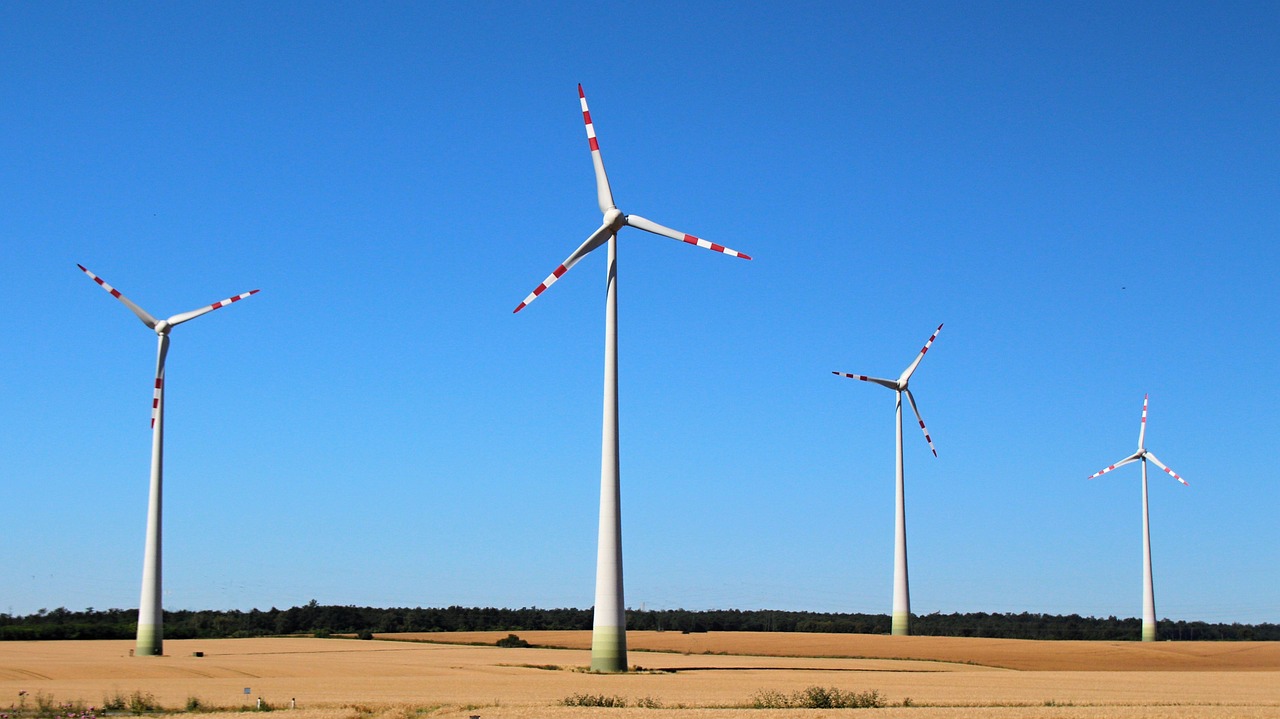
Challenges in Solar Adoption
While the potential of solar energy is undeniably impressive, the road to widespread adoption is not without its bumps. One of the most significant hurdles is the space requirement. Solar panels need ample sunlight, which often translates to vast areas of land. This can be particularly challenging in urban settings where space is at a premium. Imagine trying to fit a sprawling solar farm in a city where every square foot is already spoken for! This leads to the question: how can we balance the need for green energy with the realities of urban development?
Another challenge lies in energy storage solutions. Solar energy is inherently intermittent; it’s plentiful during sunny days but can dwindle during cloudy weather or at night. To make solar energy a reliable source, we need robust storage systems that can hold excess energy generated during peak sunlight hours and distribute it when the sun isn’t shining. Currently, battery technology is evolving, but it still has a long way to go before it can meet the demands of a fully solar-powered grid.
Furthermore, grid integration poses a significant challenge. The existing electrical grids were primarily designed for centralized power generation from fossil fuels. Integrating decentralized solar power sources requires substantial upgrades to infrastructure. This not only involves financial investment but also careful planning and coordination among various stakeholders, including governments, utility companies, and consumers. It raises the question: are we ready to overhaul our energy infrastructure to embrace a cleaner future?
To illustrate, let’s look at a table comparing the challenges faced in solar adoption versus the benefits it brings:
| Challenges | Benefits |
|---|---|
| Space Requirements | Reduces reliance on fossil fuels |
| Energy Storage Solutions | Provides energy independence |
| Grid Integration | Creates jobs in renewable sectors |
Despite these challenges, it’s essential to remember that every great leap forward comes with its own set of obstacles. The key is to approach these challenges with innovative solutions and a collaborative spirit. As technology continues to advance, we may find that many of these hurdles can be overcome, paving the way for a brighter and more sustainable energy future.
- What are the main challenges in adopting solar energy?
Space requirements, energy storage solutions, and grid integration are the primary challenges. - How can energy storage improve solar energy adoption?
Energy storage systems can store excess solar energy generated during the day for use at night or during cloudy days, making solar a more reliable energy source. - Why is grid integration a challenge for solar energy?
The existing electrical grids are designed for centralized power generation, and integrating decentralized solar power requires significant infrastructure upgrades.
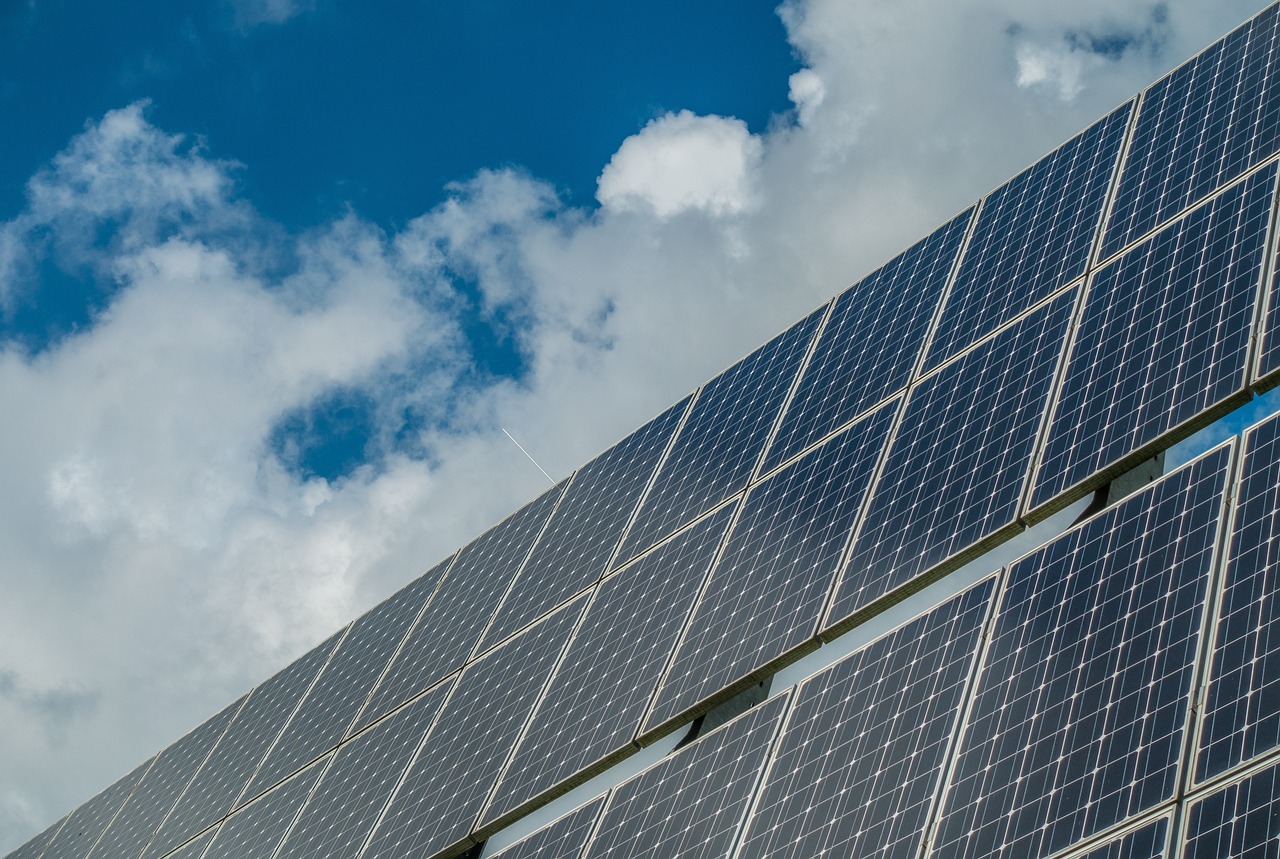
Wind Energy Developments
Wind energy has emerged as a formidable player in the renewable energy arena, and it’s not just a passing trend. The growth of wind energy is akin to watching a snowball rolling down a hill; it starts small but gains momentum and size as it progresses. This section delves into the fascinating advancements in wind energy technology, particularly focusing on both onshore and offshore wind farms, which are revolutionizing how we harness this natural resource. With a global push towards sustainability, the wind energy sector is not only expanding but also evolving to meet the growing demand for clean energy.
One of the most significant developments in wind energy is the construction of larger and more efficient turbines. Modern wind turbines are marvels of engineering, often towering over 300 feet with blades that can span more than 150 feet. These giants are capable of generating substantial amounts of electricity, often enough to power thousands of homes. The efficiency of these turbines has increased dramatically, with advancements in aerodynamics and materials science allowing for better performance even in low-wind conditions. For instance, the latest models can operate in wind speeds as low as 3 meters per second, making them viable in more locations than ever before.
Moreover, offshore wind farms are gaining traction as a major source of renewable energy. Situated in bodies of water, these farms benefit from stronger and more consistent wind patterns compared to their onshore counterparts. Countries like Denmark and the United Kingdom are leading the charge, with ambitious plans to expand their offshore wind capacity significantly. For example, the Hornsea Project in the UK, once completed, is expected to be one of the largest offshore wind farms in the world, generating enough electricity to power over a million homes. This shift towards offshore wind energy is not just about capacity; it’s also about minimizing land use conflicts, allowing for more space for agriculture and other land-based activities.
However, the road to widespread wind energy adoption is not without its challenges. One of the primary concerns is the environmental impact of wind farms on local wildlife, particularly birds and bats. While technology is evolving to mitigate these impacts—such as using radar systems to detect and deter wildlife—there is still ongoing research to ensure that the benefits of wind energy do not come at an ecological cost. Furthermore, the integration of wind energy into existing power grids presents another hurdle. The intermittent nature of wind means that energy storage solutions and smart grid technologies are essential to ensure a stable energy supply.
In conclusion, the developments in wind energy are a testament to human ingenuity and determination to combat climate change. As we continue to innovate and invest in this clean energy source, the potential for wind energy to significantly reduce our reliance on fossil fuels becomes increasingly clear. The future is bright, and the winds of change are blowing strong!
- What are the main advantages of wind energy? Wind energy is renewable, reduces greenhouse gas emissions, and can provide energy independence.
- How do wind turbines work? Wind turbines convert kinetic energy from the wind into mechanical energy, which is then converted into electricity.
- Are there any downsides to wind energy? Yes, potential downsides include impact on wildlife, noise pollution, and the need for large areas of land or sea.
- What is the future of wind energy? The future looks promising, with ongoing advancements in technology and increasing global investment in renewable energy.
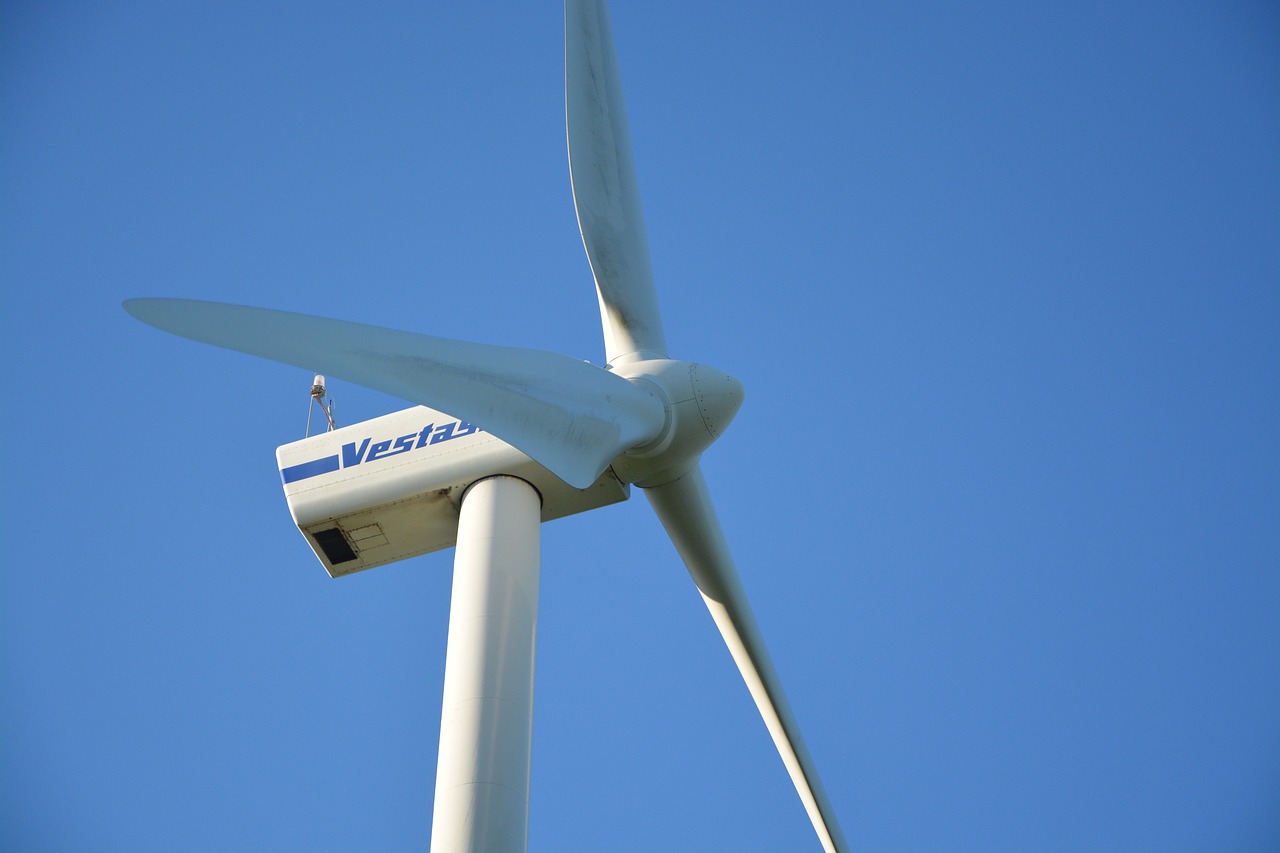
Environmental Impact of Energy Sources
The environmental impact of energy sources is a crucial topic that cannot be overlooked in today's world. As we grapple with the realities of climate change, it becomes increasingly important to assess how our energy choices affect the planet. Fossil fuels, which have been the backbone of global energy consumption for decades, are notorious for their adverse effects on the environment. They contribute significantly to carbon emissions, leading to air pollution and climate change. In contrast, renewable energy sources like solar, wind, and hydroelectric power offer a cleaner alternative that promises to reduce our ecological footprint.
To better understand this impact, let's compare the environmental consequences of fossil fuels versus renewable energy sources. Below is a table that outlines some key differences:
| Factor | Fossil Fuels | Renewable Energy |
|---|---|---|
| Carbon Emissions | High | Low to None |
| Habitat Disruption | Significant | Minimal |
| Resource Depletion | Unsustainable | Sustainable |
As illustrated, fossil fuels release a staggering amount of carbon dioxide when burned, contributing to the greenhouse effect and global warming. In fact, the energy sector is one of the largest emitters of greenhouse gases globally. On the other hand, renewable energy sources produce little to no emissions during their operation. For instance, wind turbines generate electricity without releasing pollutants, making them a vital component in the fight against climate change.
Moreover, the habitat disruption caused by fossil fuel extraction and transportation is alarming. Oil spills, coal mining, and natural gas drilling can devastate ecosystems, leading to loss of biodiversity. In contrast, renewable energy projects are designed with sustainability in mind. While they can also impact local wildlife, advancements in technology and planning have made it possible to mitigate these effects significantly. For example, wind farms are often placed in areas where they have minimal impact on bird populations, and solar panels can be installed on rooftops, reducing the need for land use.
Another critical aspect is resource sustainability. Fossil fuels are finite resources, and their extraction leads to depletion of essential natural reserves. In contrast, renewable energy sources are abundant and can be harnessed without exhausting the planet's resources. The sun shines every day, and the wind blows constantly, providing us with an endless supply of energy. This sustainability ensures that future generations will have access to clean energy, allowing for a healthier planet.
In conclusion, the transition from fossil fuels to renewable energy is not just a trend; it's a necessity for the survival of our planet. By embracing renewable sources, we can drastically reduce carbon emissions, minimize habitat disruption, and ensure that our energy resources remain sustainable. The environmental impact of our energy choices is profound, and the time to act is now.
- What are the main environmental impacts of fossil fuels? Fossil fuels contribute to high carbon emissions, habitat destruction, and resource depletion.
- How do renewable energy sources reduce environmental impact? They produce little to no emissions, have minimal habitat disruption, and are sustainable over the long term.
- Can renewable energy fully replace fossil fuels? Yes, with advancements in technology and infrastructure, renewable energy can feasibly replace fossil fuels.
- What are the benefits of transitioning to renewable energy? Benefits include reduced carbon footprints, sustainable resource use, and a healthier environment.

Carbon Footprint Reduction
The shift from fossil fuels to renewable energy sources is not just a trend; it's a necessity for our planet's health and future. When we talk about , we are essentially discussing how we can minimize the amount of carbon dioxide (CO2) emissions that are released into the atmosphere. Fossil fuels, such as coal, oil, and natural gas, are notorious for their high carbon emissions. In contrast, renewable energy sources like solar, wind, and hydroelectric power produce little to no emissions during their operation. This fundamental difference is what makes renewable energy a game-changer in the fight against climate change.
Imagine a world where the air is clean, and the skies are blue, free from the haze of pollution caused by burning fossil fuels. By transitioning to renewable energy, we can significantly lower our carbon footprints. For instance, studies show that switching to solar energy can reduce household emissions by up to 80%. Similarly, wind energy can cut carbon emissions from electricity generation by more than 50% compared to traditional fossil fuel sources. Just think about the positive impact this could have on our environment!
To put this into perspective, let’s take a look at the following table, which illustrates the carbon emissions associated with different energy sources:
| Energy Source | Average CO2 Emissions (gCO2/kWh) |
|---|---|
| Coal | 900 |
| Natural Gas | 450 |
| Oil | 800 |
| Wind | 10 |
| Solar | 20 |
| Hydro | 30 |
As you can see from the table, the difference is staggering. By embracing renewable energy, we can drastically reduce the amount of carbon released into our atmosphere. But the benefits don't stop there. Renewable energy sources not only help in reducing carbon emissions, but they also promote energy independence, create jobs, and foster technological innovation. It's like hitting multiple birds with one stone!
However, it's important to recognize that the transition to renewable energy doesn't happen overnight. There are challenges to overcome, including the need for improved energy storage solutions and the integration of renewable sources into existing energy grids. Yet, the potential rewards far outweigh these obstacles. With concerted efforts from governments, businesses, and individuals, we can pave the way for a cleaner, greener future.
In conclusion, reducing our carbon footprint through the adoption of renewable energy is not just beneficial; it's imperative for the sustainability of our planet. Each step we take towards cleaner energy sources is a step towards a healthier environment for future generations. So, are you ready to be part of the change?
- What is a carbon footprint? A carbon footprint is the total amount of greenhouse gases, primarily carbon dioxide, that are emitted directly or indirectly by an individual, organization, event, or product.
- How much can renewable energy reduce my carbon footprint? Depending on the energy source you switch to, renewable energy can reduce your carbon footprint by 50% to 80% compared to fossil fuels.
- Are there any downsides to renewable energy? While renewable energy is largely beneficial, challenges include initial installation costs, space requirements, and the need for energy storage solutions.

Resource Sustainability
When we talk about , we’re diving into the heart of what makes renewable energy such a game-changer. Unlike fossil fuels, which are finite and involve extracting resources that take millions of years to form, renewable energy sources are, in many cases, replenishable. Think of it like a garden—if you plant seeds and tend to them, they’ll keep providing fruits and vegetables year after year. Similarly, resources like solar, wind, and hydro energy can be harnessed repeatedly without the risk of depletion.
One key aspect of sustainability is the balance between energy production and natural ecosystems. Renewable energy technologies are designed to minimize environmental impact. For instance, solar panels can be installed on rooftops or brownfields, allowing us to utilize previously developed land rather than disrupting pristine environments. Wind turbines can be placed in agricultural fields or offshore, reducing their footprint on terrestrial habitats. This approach not only preserves biodiversity but also promotes a harmonious relationship between energy production and nature.
Moreover, the materials used in renewable energy systems are increasingly being sourced sustainably. For example, the production of solar panels has evolved significantly. Manufacturers are now focusing on using recycled materials and minimizing waste during production. This shift not only reduces the carbon footprint associated with manufacturing but also ensures that the resources used are less harmful to the environment. Investing in recycling technologies for wind turbine blades and solar panels is another step towards creating a circular economy where materials are reused rather than discarded.
However, it’s crucial to recognize that no energy source is entirely without impact. For instance, while solar farms require land, the careful selection of sites can mitigate negative effects on local ecosystems. Similarly, wind turbines can pose risks to bird and bat populations, but ongoing research and technology improvements are helping to address these challenges. The goal is to develop practices that allow us to harness energy while ensuring that our natural resources remain intact for future generations.
In summary, the sustainability of renewable resources hinges on our ability to innovate and adapt. By prioritizing eco-friendly practices, utilizing technology to optimize resource use, and continuously assessing the environmental impact of our energy choices, we can pave the way for a greener future. As we transition away from fossil fuels, it’s not just about finding alternatives; it’s about creating a sustainable energy landscape that respects and preserves our planet.
- What are renewable energy sources?
Renewable energy sources include solar, wind, hydroelectric, geothermal, and biomass. These sources are replenished naturally and can be used to generate electricity and heat. - How do renewable energy sources impact the environment?
Renewable energy sources generally have a lower environmental impact compared to fossil fuels. They produce little to no greenhouse gas emissions during operation and can be developed with minimal disruption to ecosystems. - Can renewable energy meet global energy demands?
Yes, with continuous advancements in technology and increased investment, renewable energy has the potential to meet global energy demands sustainably and reliably. - What challenges do renewable energy sources face?
Some challenges include the need for energy storage solutions, grid integration, and the variability of renewable sources like solar and wind. However, ongoing research and development are addressing these issues.
Frequently Asked Questions
- Can renewable energy completely replace fossil fuels?
While it's a complex transition, renewable energy has the potential to significantly reduce our reliance on fossil fuels. With advancements in technology and increased investment, we are moving closer to a future where renewable sources can meet our energy needs.
- What are the main types of renewable energy?
The primary types of renewable energy include solar, wind, hydro, geothermal, and biomass. Each of these sources has unique benefits and can contribute to a more sustainable energy landscape by reducing carbon emissions and promoting energy independence.
- How does solar energy work?
Solar energy harnesses sunlight using photovoltaic cells that convert light into electricity. This technology has advanced significantly, making solar panels more efficient and affordable, allowing homeowners and businesses to tap into this clean energy source.
- Are there challenges in adopting renewable energy?
Yes, there are several challenges, including the need for energy storage solutions, grid integration, and the availability of space for installations. However, ongoing research and development are addressing these issues to facilitate a smoother transition.
- What impact does renewable energy have on the environment?
Renewable energy sources generally have a much lower environmental impact compared to fossil fuels. They produce minimal carbon emissions, help preserve natural ecosystems, and contribute to a healthier planet for future generations.
- How can I get started with solar energy for my home?
Getting started with solar energy involves assessing your energy needs, researching local solar providers, and considering available incentives or rebates. Many companies offer consultations to help you understand the best options for your situation.
- Is renewable energy cost-effective?
Yes, the costs of renewable energy technologies, particularly solar and wind, have decreased significantly over the past decade. With government incentives and long-term savings on energy bills, many people find renewable energy to be a financially attractive option.
- What role do wind farms play in renewable energy?
Wind farms, both onshore and offshore, harness wind energy to generate electricity. They are a crucial component of the renewable energy mix, providing a substantial amount of clean energy and helping to reduce our dependence on fossil fuels.



















